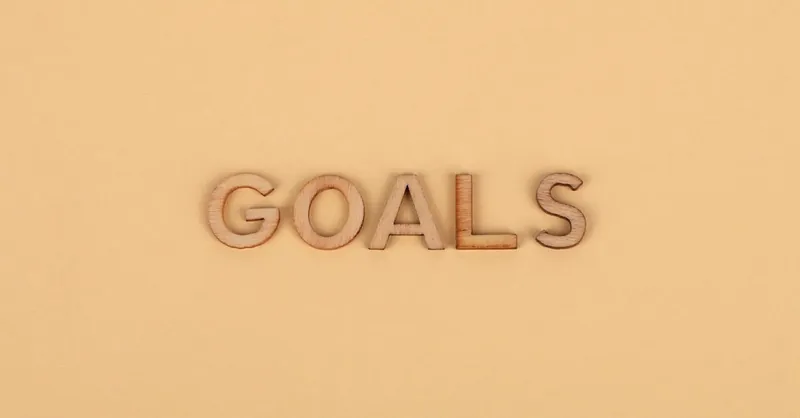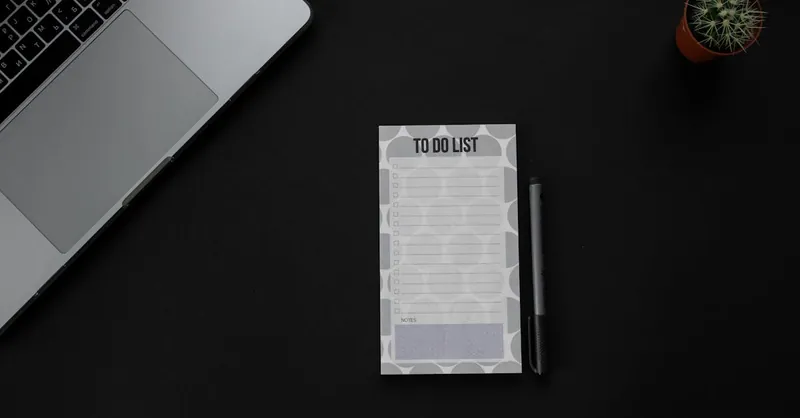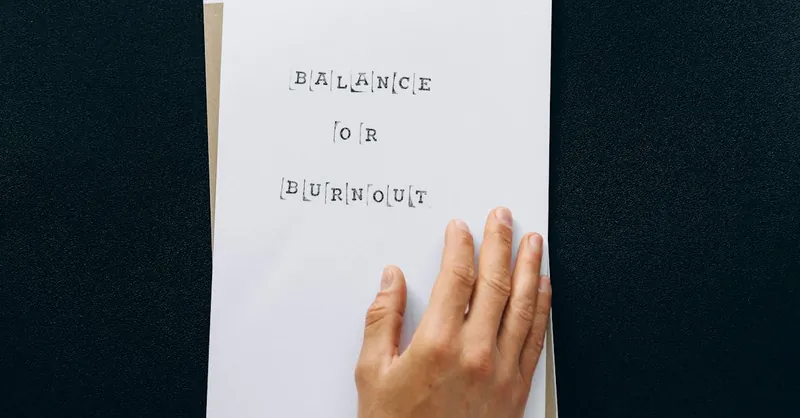Minimalism and Effective Goal Setting for a Simpler Life
Category: Lifestyle
Discover How Minimalism Enhances Goal Setting for True Fulfillment
If you've arrived here, you're likely someone who’s tired of feeling overwhelmed by clutter—both physical and mental—and struggling to make meaningful progress toward your goals. Whether you're new to minimalism or you've tried simplifying your life but find that your goals still feel out of reach, this post is crafted just for you. You understand the value of living intentionally but might be wrestling with how to align your simplified lifestyle with clear, actionable goals that truly matter. This article approaches minimalism and effective goal setting together, offering a fresh, practical framework designed to bring both clarity and focus to your daily life.
Unlike typical advice that treats minimalism and goal setting as separate endeavors, here you'll learn how to integrate these concepts to maximize your energy, reduce distractions, and build momentum toward achieving what’s genuinely fulfilling. We know you don't want generic tips or vague platitudes — you want actionable insight that fits your lifestyle and helps you cut through noise and complexity.
Stay with us to uncover how embracing less can actually help you get more of what you want in life, and how setting goals from a minimalist perspective can transform your journey toward simplicity and success.
- Discover How Minimalism Enhances Goal Setting for True Fulfillment
- Understanding Minimalism: Core Principles and Benefits
- The Psychology Behind Effective Goal Setting
- How Minimalism Supports Clarity in Prioritizing Goals
- Setting SMART Goals Within a Minimalist Framework
- Decluttering Your Mind and Environment to Boost Focus
- Creating a Simplified, Purpose-Driven Daily Routine
- Tools and Techniques for Tracking Minimalist Goals
- Overcoming Common Barriers: Avoiding Overwhelm and Burnout
- Aligning Your Values with Your Goals to Maintain Motivation
- Sustaining Minimalism and Goal Achievement Long Term
Understanding Minimalism: Core Principles and Benefits
At its heart, minimalism is more than just decluttering your physical space—it's a transformative mindset centered on intentional living and prioritizing what truly matters. By focusing on less, you create the necessary space—both mentally and physically—to pursue your most meaningful goals with clarity and purpose. The core principles of minimalism include:
- Intentionality: Making deliberate choices about what to keep, how to spend your time, and where to direct your energy.
- Simplicity: Stripping away excess—be it possessions, commitments, or distractions—that don’t add value to your life.
- Purpose-driven living: Aligning your daily actions with your deepest values and long-term aspirations.
Embracing these principles offers numerous benefits that directly support effective goal setting and achievement:
- Enhanced focus and clarity by eliminating non-essential tasks and objects that compete for your attention.
- Reduced decision fatigue because fewer choices simplify planning and execution.
- Improved mental well-being as a clutter-free environment fosters calmness and reduces stress.
- Increased productivity by channeling energy into meaningful work instead of scattered effort.
- Greater satisfaction and fulfillment as you pursue goals rooted in authenticity rather than external pressures.
In essence, minimalism acts as a powerful lens to refine your goals, helping you identify what truly deserves your time and effort, which sets the foundation for more effective and rewarding goal-setting strategies.

Image courtesy of PNW Production
The Psychology Behind Effective Goal Setting
Understanding the psychological factors involved in goal setting is essential to harnessing minimalism’s power in this process. Effective goal setting is not just about listing objectives; it’s about aligning your mental blueprint with clear, motivating, and achievable targets. Psychology research reveals several key principles that make goal setting more impactful:
-
Clarity and Specificity: Goals that are specific and well-defined engage the brain's focus and increase motivation. Vague goals like "be healthier" are less effective than precise targets such as "exercise 30 minutes, 4 times a week." Minimalism’s emphasis on clarity naturally supports this by encouraging you to cut through clutter—mental and physical—and identify exactly what matters.
-
Intrinsic Motivation: Goals deeply connected to personal values and intrinsic desires create stronger and more sustained motivation. Minimalism encourages purpose-driven living, making it easier to recognize and pursue goals that align with your true self rather than external expectations or societal pressures.
-
Reduced Cognitive Load: Our brains have limited decision-making capacity. When overwhelmed by too many options or distractions, focus and willpower dwindle. By minimizing distractions and commitments, you preserve mental energy, enabling higher-quality decisions and more consistent progress on your goals.
-
Progress and Feedback Loops: Seeing tangible progress builds momentum and reinforces commitment. Minimalism’s focus on simplicity allows you to break complex goals into manageable steps, making accomplishments more visible and rewarding.
Incorporating these psychological insights into your minimalist lifestyle creates a powerful synergy—one that transforms goal setting from a daunting task into a focused, motivating, and fulfilling practice. By understanding how your mind works and applying minimalist principles, you set the stage for meaningful achievements with less stress and greater satisfaction.

Image courtesy of Ann H
How Minimalism Supports Clarity in Prioritizing Goals
Minimalism plays a crucial role in enhancing clarity when prioritizing your goals, streamlining what often feels like an overwhelming list of aspirations into a focused, manageable set of priorities. By intentionally reducing excess—whether it’s physical clutter, digital distractions, or overcommitting yourself—minimalism creates the mental and emotional space needed to clearly identify what truly matters in your life. This elimination of noise allows you to see your goals through a sharper lens, prioritizing those that align deeply with your core values and long-term vision.
When you embrace minimalism, goal prioritization becomes a more deliberate process anchored in simplicity and meaningfulness. Here’s how minimalism supports this clarity:
- Focus on Fewer, Impactful Goals: Instead of chasing multiple goals simultaneously, minimalism encourages you to hone in on the few objectives that will bring the greatest fulfillment and progress.
- Reduced Mental Clutter: By cutting out unnecessary commitments and distractions, your cognitive load lightens, making it easier to evaluate each goal’s relevance and urgency.
- Intentional Resource Allocation: With limited possessions and fewer activities vying for your attention, you can dedicate time, energy, and resources more effectively toward high-priority goals.
- Enhanced Decision-Making: A minimalist mindset simplifies choices, empowering you to confidently say “no” to goals or opportunities that do not serve your primary focus.
Ultimately, minimalism transforms goal setting from a scattershot to a purposeful, streamlined process, enabling you to prioritize goals with crystal-clear clarity. This synergy not only accelerates your progress but also ensures your efforts lead to genuine satisfaction and sustainable success.

Image courtesy of João Jesus
Setting SMART Goals Within a Minimalist Framework
Integrating the SMART goal-setting method—Specific, Measurable, Achievable, Relevant, and Time-bound—with minimalist principles creates a robust framework for achieving meaningful outcomes without unnecessary complexity. Within a minimalist lifestyle, setting SMART goals becomes more effective because you're already committed to clarity, focus, and intentional living, which strengthens each element of the SMART criteria.
-
Specific: Minimalism encourages you to distill your objectives to their purest form. Instead of broad or ambiguous goals like “get fit,” a minimalist approach helps you define precise targets such as “walk 10,000 steps five days a week.” This specificity eliminates distractions and sharpens your focus.
-
Measurable: Tracking progress aligns naturally with minimalism’s emphasis on simplicity and transparency. Choose measurable milestones that are easy to monitor without adding overwhelming data or tools—like logging workouts in a simple journal or tracking spending habits to support financial minimalism.
-
Achievable: By reducing excess commitments and focusing on what matters, minimalism improves your ability to set realistic goals. Avoid overwhelming yourself with too many objectives; instead, select goals that you can reasonably accomplish given your current lifestyle and resources.
-
Relevant: This is where minimalism and purpose-driven living align perfectly. Choosing goals that resonate deeply with your values ensures that the time and energy you invest are meaningful. Minimalism helps filter out goals driven by social comparison or external pressures, concentrating on what truly fulfills you.
-
Time-bound: Minimalism supports a disciplined approach to deadlines by encouraging intentional scheduling and avoiding overcommitment. Setting clear time frames creates urgency without stress, maintaining balance and preventing burnout.
By applying the SMART framework within a minimalist mindset, you create goals that are not only clear and actionable but also aligned with your simplified lifestyle. This fusion promotes focused progress, reduces overwhelm, and maximizes the likelihood of meaningful achievement. Embracing this synergy means you’re not just setting goals—you’re crafting a sustainable path to success that honors your desire for both simplicity and fulfillment.

Image courtesy of KATRIN BOLOVTSOVA
Decluttering Your Mind and Environment to Boost Focus
One of the most powerful ways minimalism enhances effective goal setting is through decluttering both your physical environment and mental space—a vital step to boost focus and maintain sustained motivation. When your surroundings are crowded with unnecessary items or your mind is overwhelmed by endless to-dos and distractions, your ability to concentrate on meaningful goals diminishes significantly.
The Impact of Physical Decluttering on Mental Clarity
A tidy, minimalist environment reduces sensory overload and creates a calm backdrop that supports deep focus. Research shows that clutter in your physical space contributes to increased stress and reduces your brain’s capacity to process information efficiently. By regularly removing non-essential possessions, you free yourself from visual noise and reinforce a mindset of intentionality. This physical simplicity translates into mental clarity, making it easier to identify priorities, plan actions, and stay committed to your goals.
Clearing Mental Clutter for Enhanced Productivity
Equally important is decluttering your mind—letting go of lingering worries, scattered thoughts, and unresolved commitments that drain your cognitive resources. Techniques such as journaling, mindfulness meditation, and setting boundaries on digital consumption help offload mental clutter. When you cultivate a minimalist mental space, you improve:
- Focus and concentration – fewer distractions mean your attention is more easily directed toward tasks that matter.
- Decision-making capacity – reducing cognitive overload preserves willpower and reduces fatigue.
- Emotional calm – a decluttered mind lowers stress and anxiety, creating a fertile ground for creativity and problem-solving.
By intentionally decluttering both your environment and mental landscape, you create optimal conditions for laser-focused goal setting and efficient action-taking. This dual decluttering process aligns seamlessly with minimalism’s core value of simplicity, empowering you to pursue your goals with clarity, calmness, and purpose.

Image courtesy of Anna Nekrashevich
Creating a Simplified, Purpose-Driven Daily Routine
Crafting a simplified, purpose-driven daily routine is a cornerstone of minimalist living that directly supports effective goal setting. When your daily habits and schedules reflect intentional choices aligned with your core values, each day becomes a meaningful step toward your most important goals. Minimalism encourages you to strip away superfluous activities and commitments, making room for focused action and deeper fulfillment.
Key Elements of a Minimalist Daily Routine
-
Intentional Scheduling: Design your day around a few prioritized tasks that correspond to your highest-impact goals. Avoid overloading your schedule; instead, allocate dedicated blocks of time for these meaningful activities, allowing for flow and focus.
-
Morning and Evening Rituals: Start and end your day with simple habits that center your mind and set a purposeful tone, such as mindfulness practices, journaling your top objectives, or a quick review of your progress. These rituals create consistency and reinforce your commitment to your goals.
-
Limit Distractions and Multitasking: Embrace single-tasking to enhance concentration and productivity. Remove unnecessary notifications, designate specific times for checking emails or social media, and create a workspace free of clutter to maintain mental clarity.
-
Regular Reflection and Adjustment: Periodically assess your routine to ensure it continues to serve your evolving priorities. Minimalism supports adaptability—letting go of routines or habits that no longer align with your goals or values.
By integrating these elements, your daily routine shifts from hectic and scattered to clear, calm, and aligned. This purpose-driven simplicity not only boosts productivity but fosters deeper satisfaction, as you consistently invest time in what truly matters. Ultimately, a minimalist daily routine becomes a powerful vehicle for transforming your aspirations into tangible achievements, all while preserving the peace and balance essential to sustainable success.

Image courtesy of Arina Krasnikova
Tools and Techniques for Tracking Minimalist Goals
Effectively tracking your minimalist goals is essential to maintaining focus, measuring progress, and staying motivated without creating unnecessary complexity or overwhelm. The key is to use simple, streamlined tools and techniques that align with minimalist principles—helping you keep your goal-setting process clear, intentional, and manageable.
Digital Tools with Minimalist Design
Many digital apps offer sleek, distraction-free interfaces tailored for goal tracking and habit formation. Look for tools that emphasize ease-of-use and avoid feature bloat, such as:
- Habit trackers like Habitica, Loop, or Streaks, which simplify monitoring daily habits that support your larger goals.
- Minimalist to-do lists and planners such as Todoist or Microsoft To Do, perfect for prioritizing tasks related to your main objectives without overwhelming interface clutter.
- Simple journaling apps like Day One or Journey that facilitate reflective practice and goal progress tracking without excessive bells and whistles.
Analog Techniques for Mindful Tracking
If digital tools feel distracting or counterintuitive for your minimalist lifestyle, consider analog methods that foster intentionality and deeper engagement:
- Bullet Journaling: This customizable system helps you log tasks, habits, and reflections in one compact notebook—great for prioritizing goals and tracking incremental progress with simplicity.
- Daily or weekly planners: Use plain notebooks or printed minimalist planners to map out your goal-related actions, keeping entries clear and focused.
- Index cards or sticky notes: For quick, tangible reminders of priorities or milestones, physical notes help keep your goals visible without cluttering your space.
Techniques to Enhance Goal Tracking
To maximize the effectiveness of whichever tool you choose, integrate these minimalist tracking techniques:
- Limit your tracked goals to a manageable number (3-5 maximum) to prevent overwhelm and maintain focus.
- Set regular intervals for review and reflection—weekly check-ins or monthly evaluations help you assess progress and adjust without getting lost in details.
- Use visual cues like progress bars or simple charts that provide clear feedback and keep motivation high.
- Combine tracking with mindfulness by journaling brief insights or lessons learned, deepening the connection between your actions and your values.
By embracing minimalist tools and techniques for tracking goals, you create a clear and motivating system that supports sustained purpose-driven progress without unnecessary complexity. This approach preserves your mental and physical space—empowering you to focus wholly on what truly matters in your journey toward simplicity and achievement.
Image courtesy of Viridiana Rivera
Overcoming Common Barriers: Avoiding Overwhelm and Burnout
One of the most frequent challenges in both minimalism and goal setting is overwhelm, which often leads to burnout—a state where motivation saps and progress stalls. Minimalism offers powerful strategies to overcome these barriers by fostering sustainable habits and preserving your mental and physical energy. The key lies in embracing intentional pacing and realistic expectations without sacrificing clarity or purpose.
Strategies to Prevent Overwhelm and Burnout
-
Limit Your Focus to Essential Goals
Avoid the temptation to pursue too many objectives at once. Minimalism teaches the value of focusing on a small number of high-impact goals that align with your values. By narrowing your focus, you reduce cognitive overload and create room for consistent, manageable action. -
Break Goals Into Mini Steps
Large goals can feel daunting and paralyzing. Break them into bite-sized, achievable tasks that fit comfortably into your daily routine. This incremental approach not only reduces stress but also builds momentum through steady progress, reinforcing motivation. -
Build Rest and Recovery Into Your Routine
Effective goal setting within a minimalist lifestyle includes respecting your physical and emotional limits. Schedule regular breaks and downtime to recharge your energy. Prioritize activities that restore calmness and prevent burnout, such as meditation, light exercise, or simple leisure. -
Set Boundaries Around Time and Energy
Use minimalism to create clear boundaries that protect your focus. Say no to non-essential commitments or distractions that drain your energy. This might mean limiting social media use, delegating tasks, or declining opportunities that don’t align with your goals. -
Practice Self-Compassion and Flexibility
Understand that progress is rarely linear. Minimalism encourages grace toward yourself during setbacks and the flexibility to reassess and refine your goals as needed. This mindset lowers pressure and sustains motivation over time.
By consciously applying these minimalist-inspired strategies, you can effectively avoid overwhelm and burnout, creating a balanced approach to goal setting that nurtures both productivity and well-being. This ensures your journey toward simplicity and success remains energizing, manageable, and rewarding—a true reflection of minimalist intention in action.

Image courtesy of Nataliya Vaitkevich
Aligning Your Values with Your Goals to Maintain Motivation
A cornerstone of sustainable motivation in goal setting, especially within a minimalist lifestyle, is deep alignment between your goals and your core values. When your goals resonate authentically with what you fundamentally believe and prioritize, your drive transforms from fleeting enthusiasm to enduring commitment. Minimalism encourages you to strip away superficial or externally-imposed objectives, making space for goals that genuinely reflect your identity and aspirations.
Why Values Alignment Fuels Lasting Motivation
-
Intrinsic Motivation Over External Pressure
Goals anchored in personal values tap into intrinsic motivation, which is far more powerful and resilient than goals driven by societal expectations or comparison. This internal motivation naturally fuels perseverance when challenges arise. -
Clearer Decision-Making and Prioritization
When values guide your goal selection, making choices about where to focus time and energy becomes easier. This clarity minimizes second-guessing and keeps your efforts concentrated on what truly matters, reinforcing your minimalist practice of intentional living. -
Greater Satisfaction and Meaning
Progress toward goals consistent with your values produces a sense of fulfillment beyond mere accomplishment. This emotional reward strengthens motivation, encouraging continuous growth and sustainable success.
Practical Steps to Align Values and Goals
- Identify Your Core Values: Reflect on what principles and qualities are most important to you—such as simplicity, connection, health, or creativity.
- Evaluate Your Current Goals: Assess whether each goal supports or conflicts with these values. If a goal feels disconnected or draining, consider revising or letting it go.
- Reframe Goals Around Values: For example, rather than setting a vague goal like “make more money,” a value-aligned goal might be “earn enough to support a lifestyle that prioritizes freedom and wellness.”
- Use Values as a Decision Filter: When new opportunities or distractions appear, ask, “Does this align with my values and core goals?” If not, it’s easier to decline and remain focused.
By centering your goals within the framework of your personal values, minimalism becomes not just a lifestyle but a compass for meaningful achievement. This alignment sustains motivation naturally, reduces friction, and cultivates a sense of purpose that powers you forward with clarity and joy.

Image courtesy of Nataliya Vaitkevich
Sustaining Minimalism and Goal Achievement Long Term
Maintaining a minimalist lifestyle while consistently achieving your goals requires intentional systems that support long-term sustainability and growth. Minimalism is not a one-time decluttering event but a continuous practice of simplifying and realigning your life with evolving priorities. Similarly, effective goal achievement thrives on persistence, periodic reassessment, and adaptability—qualities deeply compatible with minimalist principles.
To sustain minimalism and goal success over time, focus on these key practices:
-
Regularly Review and Reassess Your Goals
Life changes, and so do your values and circumstances. Schedule consistent intervals—monthly or quarterly—to reflect on your current goals and minimalist habits. Ask yourself if your goals still align with your core values and whether your environment continues to support your focus. This ongoing reassessment prevents stagnation and unnecessary clutter, ensuring your efforts remain purposeful and relevant. -
Embrace Flexibility Without Compromising Core Intentions
Minimalism encourages simplicity but not rigidity. Adapt your goals and routines when needed to respond to new insights, opportunities, or challenges. Flexibility reduces burnout and keeps your motivation fresh, while your core minimalist mindset anchors you to what truly matters. -
Build Systems to Support Consistency
Establish habits and environments that naturally encourage productive behavior. Examples include maintaining a clutter-free workspace, setting up automatic reminders for goal check-ins, or creating minimal but effective planning rituals. Systems reduce reliance on willpower alone and make it easier to sustain focus and momentum. -
Celebrate Small Wins and Progress
A minimalist approach values quality over quantity, so recognize and savor meaningful milestones instead of only major achievements. Celebrating incremental progress nourishes motivation and reinforces positive habits, making long-term goal fulfillment more attainable. -
Guard Your Energy and Boundaries Continuously
Protecting time, space, and mental energy is essential to prevent distractions and overwhelm. Use minimalist boundary-setting tools—like saying no to non-essential commitments and limiting digital consumption—to preserve your capacity for focused goal pursuit throughout your journey.
By embedding these practices into your minimalist lifestyle, you create a resilient framework that nurtures ongoing clarity, motivation, and achievement. This sustainable approach enables you to keep goals in sight without the chaos of excess, fully embracing the minimalist promise: doing more of what matters, with less friction and distraction, for life.

Image courtesy of Polina ⠀
